Table of contents [Show]
A Festival of Homecoming and Harvest
Every year, as the monsoon retreats and the fields of Kerala glisten with green, families prepare for Onam, a 10-day festival of flowers, food, dance, and stories. More than just rituals, Onam is an opportunity for parents to share with children what it means to belong, to give thanks, and to celebrate heritage.
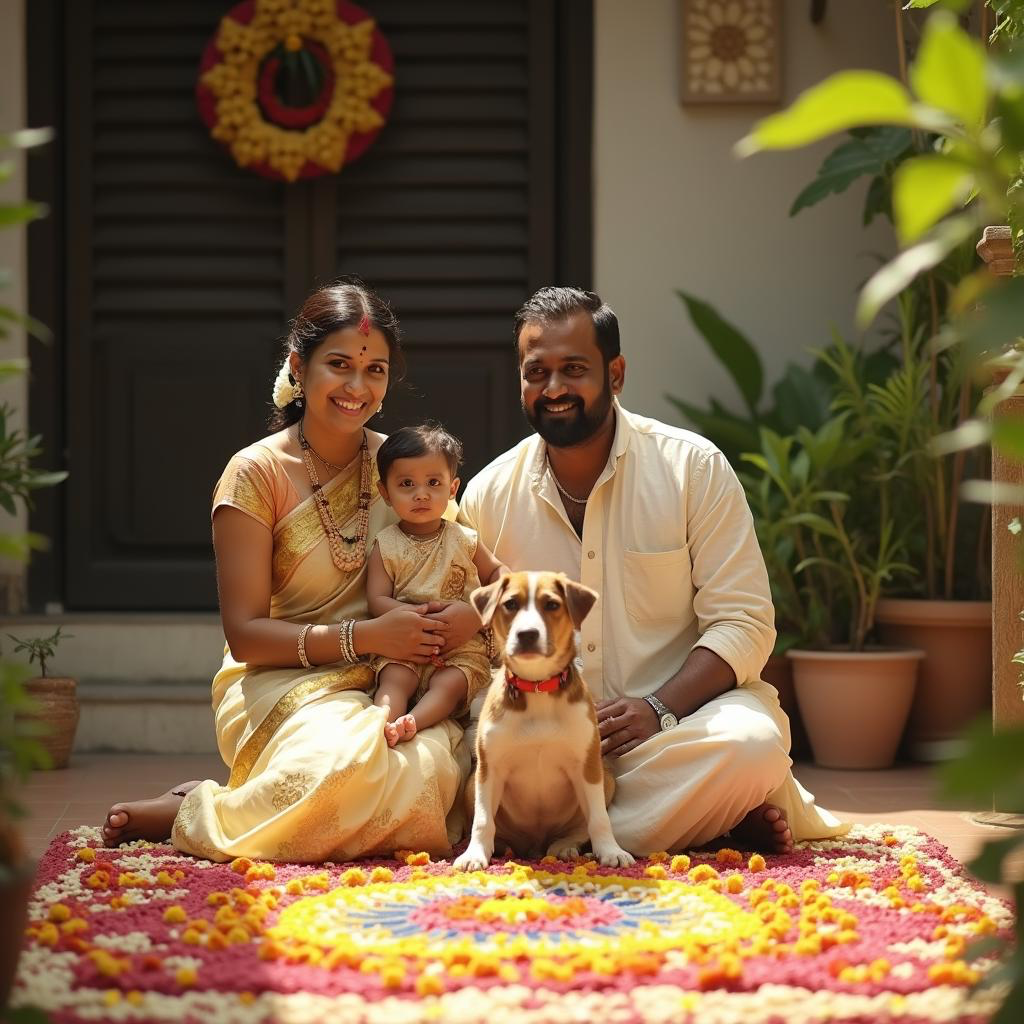
At its heart, Onam is a harvest festival timed to the Malayalam month of Chingam, when rains subside and the first crops are gathered. This is not just coincidence but deep agricultural wisdom: after months of endurance through heavy monsoons, farmers finally see the fruits of their labour. Onam becomes their way of offering thanks for abundance, praying for prosperity, and reminding children that our celebrations are always tied to nature’s rhythms.
But for Malayalis across the world, Onam is more than a season of crops. It is also the story of a king, Mahabali, whose love for his people was so great that he is remembered and welcomed home every year.
The Story Parents Can Tell Their Children
The legend of Onam is one children love to hear. Long ago, Kerala was ruled by King Mahabali, a wise and generous ruler. His people were happy, prosperous, and united. But the gods grew worried that Mahabali’s popularity outshone theirs.
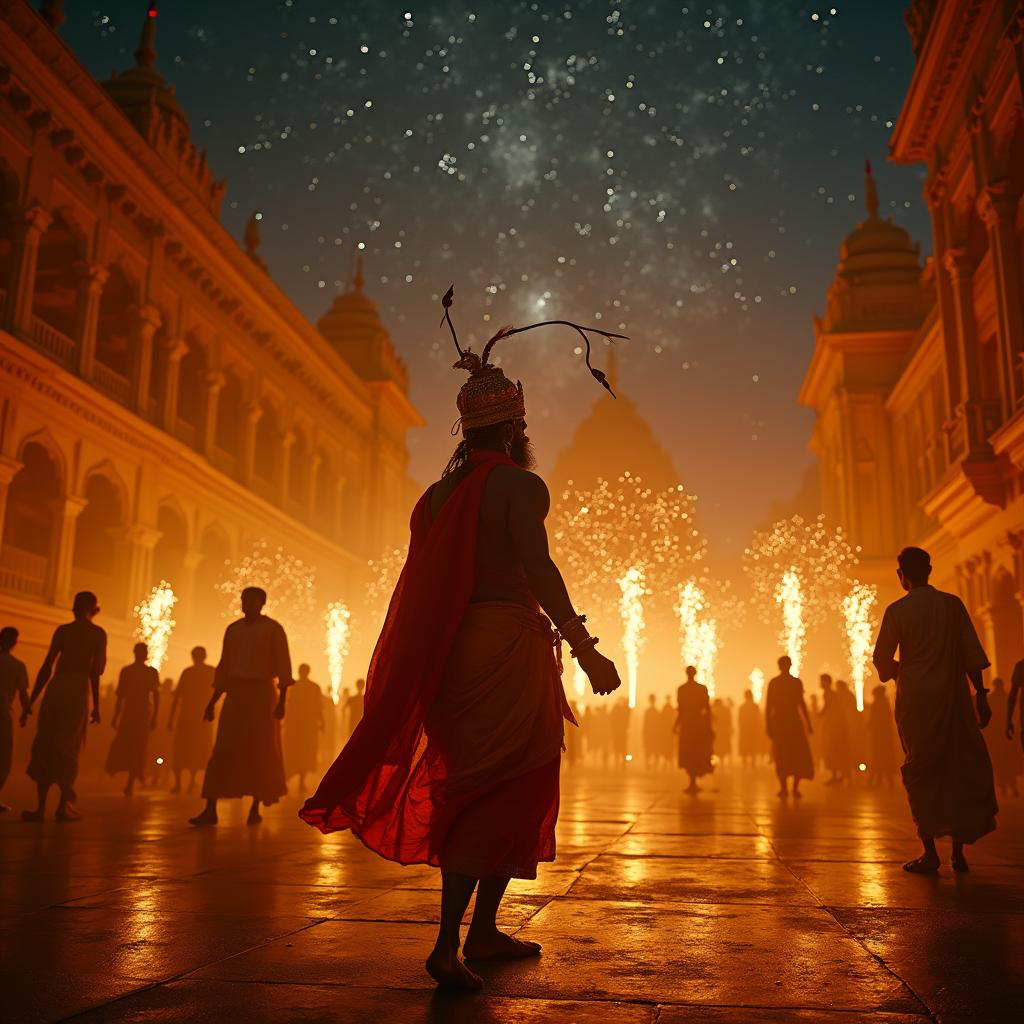
So, Lord Vishnu appeared in the form of a small Brahmin boy, Vamana, and asked Mahabali for three steps of land. True to his generous nature, the king agreed. Vamana then grew to an enormous size covering the sky and earth in his first two steps. With no land left, Mahabali offered his own head for the third.
Instead of punishing him, Vishnu was moved by Mahabali’s selflessness. He granted him permission to return from the underworld once a year to visit his beloved people. That annual homecoming is what we celebrate as Onam.
For children, this tale isn’t just myth, it's a lesson in kindness, humility, and keeping promises.
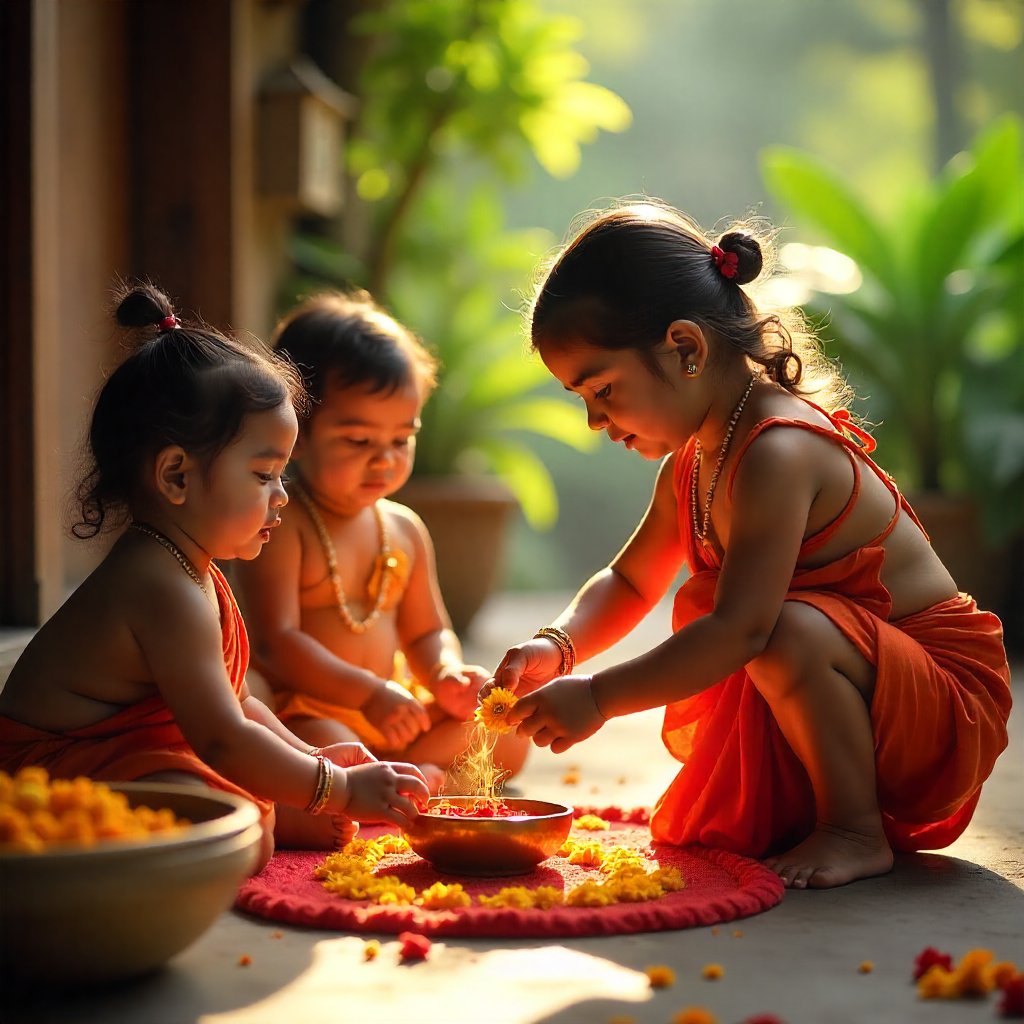
Ten Days of Joy: How to Explain Onam’s Celebrations
Each day of Onam has a special name, activity, and meaning. Parents can make this exciting for children by walking them through the “festival calendar”:
- Atham (Day 1): The festival begins with the first layer of the flower carpet, Pookalam. Kids can enjoy adding new flowers each day.
- Chithira (Day 2): Homes are cleaned and decorated, teaching children about fresh beginnings.
- Chodi (Day 3): Families exchange gifts reminding kids about thoughtfulness.
- Vishakam (Day 4): Competitions begin, from cooking to sports.
- Anizham (Day 5): Famous Vallamkali (boat races) take place symbolising teamwork.
- Thriketa (Day 6): Schools close, families reunite, and joy builds up.
- Moolam (Day 7): Dance performances begin, to introduce children to Kerala’s art forms like Thiruvathira.
- Pooradam (Day 8): Idols of Mahabali and Vamana are cleaned and decorated.
- Uthradom (Day 9): Known as the “First Onam,” marking Mahabali’s arrival.
- Thiruvonam (Day 10): The grand feast day when Mahabali is believed to visit every Malayali home. Families prepare the Onasadya, a vegetarian meal served on a banana leaf with over 20 dishes.
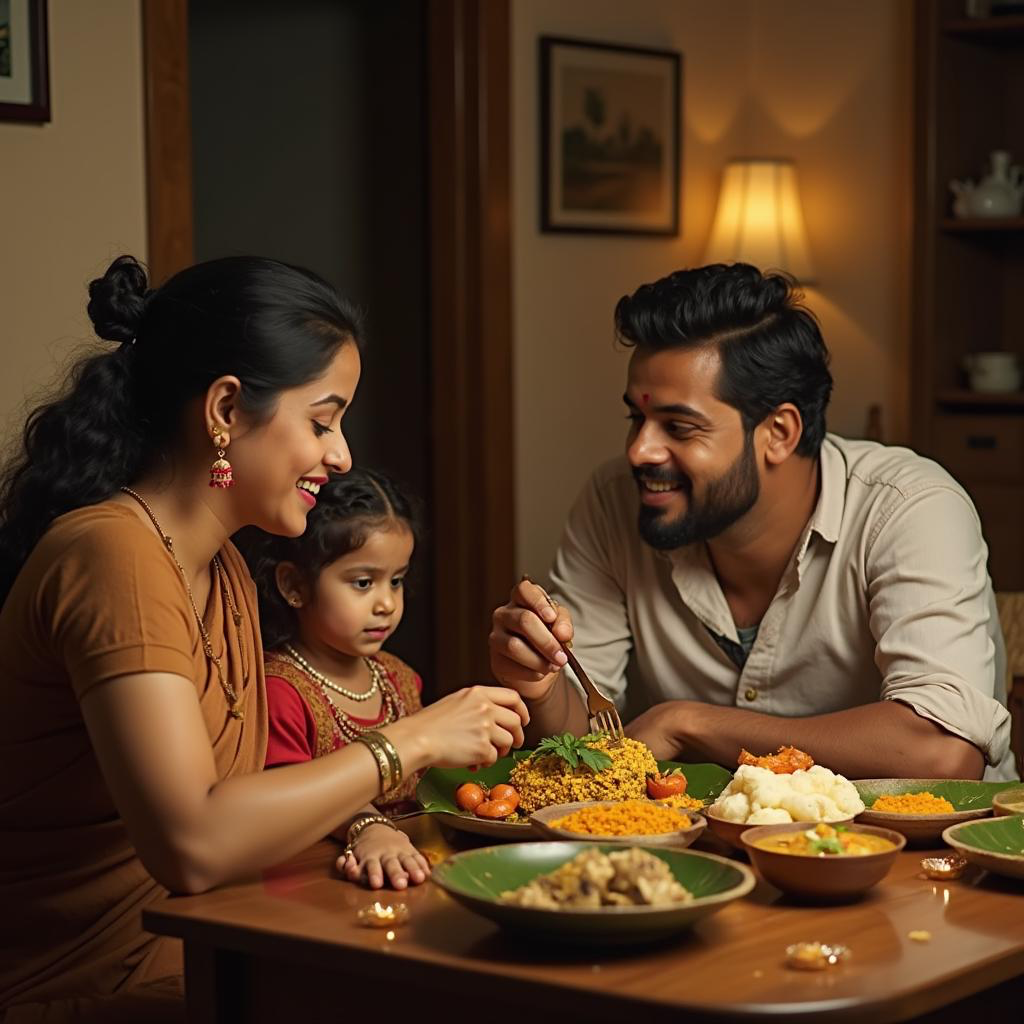
This 10-day journey shows children how festivals are not just one event but a season of learning, rituals, and bonding.
Why Onam Still Matters for Families Today

For modern parents, especially those raising children outside Kerala, Onam can be more than nostalgia. It offers valuable lessons:
- Gratitude for nature’s gifts (explaining harvest and food cycles).
- Unity and inclusivity (Onam is celebrated by Malayalis of all religions).
- Cultural pride (teaching children folk songs, dances, and traditions).
- Family bonding (from cooking Onasadya together to designing Pookalam).
In a world of fast-moving celebrations, Onam reminds families that slowing down, gathering together, and remembering our stories is what truly strengthens identity.
FAQs for Parents
1. Why is King Mahabali so important in Onam?
Because he symbolises generosity, fairness, and love for his people, values worth passing to our children.
2. How can non-Malayali families celebrate Onam?
Through simple rituals make a small flower carpet, cook one traditional dish, or read the Mahabali story with your kids.
3. What is the Onasadya feast?
It’s a traditional vegetarian meal with dishes like avial, sambhar, olan, and payasam served on banana leaves to honour abundance and sustainability.
4. Is Onam only a Hindu festival?
No. Though rooted in Hindu mythology, Onam is celebrated by Malayalis across religions as a cultural festival.
5. How do schools in Kerala celebrate Onam?
Children dress in traditional clothes, perform dances, and participate in games, creating a joyful, inclusive environment.
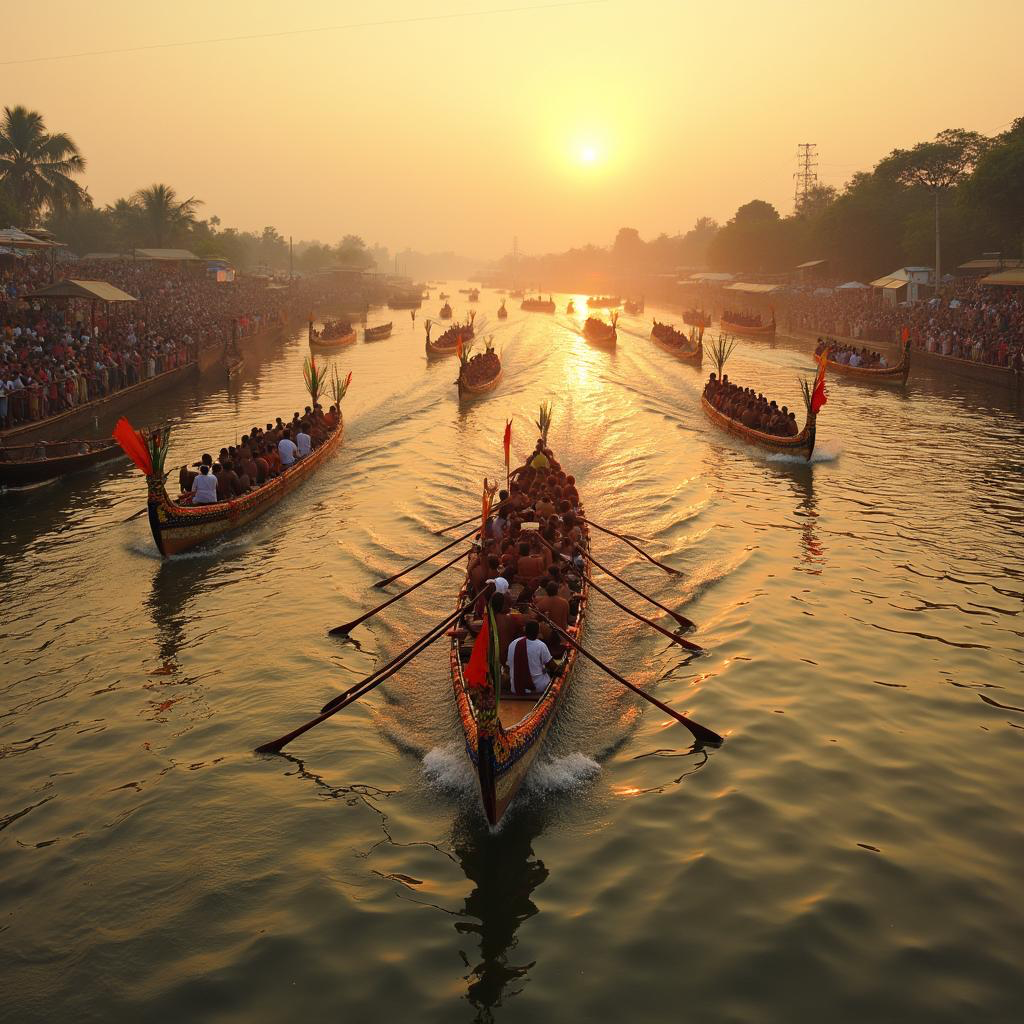
Onam is more than a festival it’s a timeless reminder that kindness, gratitude, and togetherness are what make communities thrive. As parents, when we share the story of Mahabali and create little traditions at home, we gift our children a legacy of values.
For more stories that shape today’s parents, follow mapabear.


 Guiding and Empowering Parents with fact-checked excellence -
Guiding and Empowering Parents with fact-checked excellence -